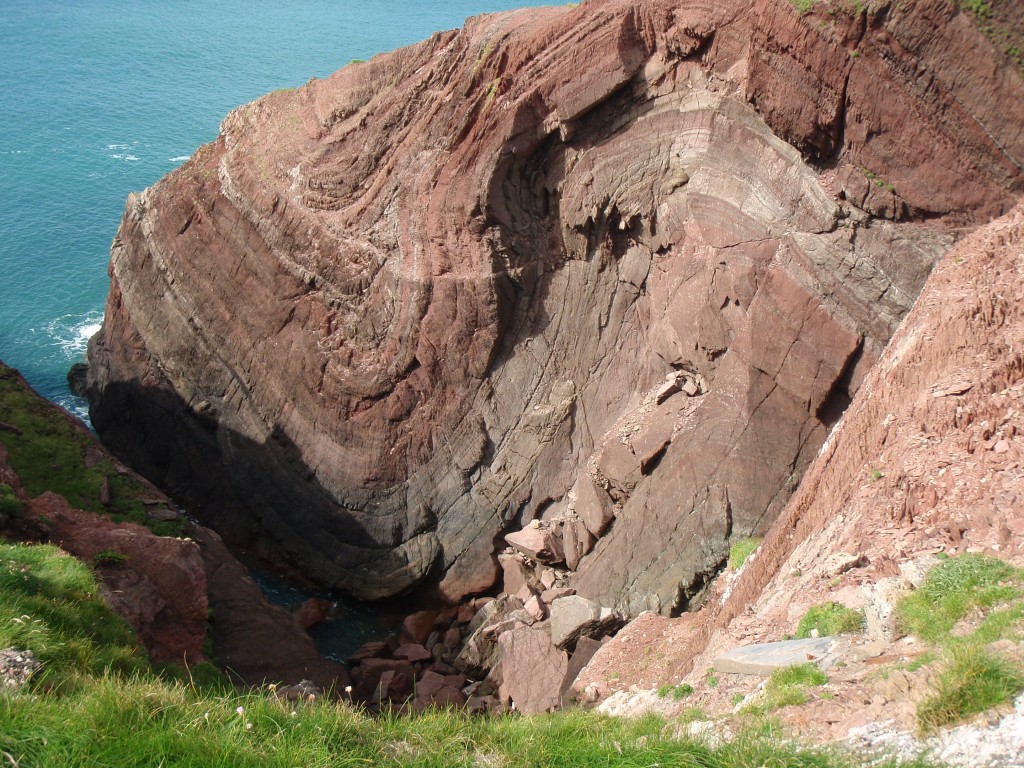My life is currently in a phase that isn’t compatible with many trips to the field. No complaints, but this does mean a lack of opportunities to take geological photos. So when my mum told returned from a geological field trip to Pembrokeshire in Wales, I was soon pestering for a copy of her pictures. I was not disappointed, as you shall soon see.
Sticking out of the southwestern corner of Wales, Pembrokeshire contains a range of rocks, from Precambrian to Carboniferous. The above photo is of Devonian rocks of the ‘Old Red Sandstone’. These were deposited on the bones of the Caledonian orogeny in a continental setting (hence the red colour).
These sandstones started off as flat layers sitting on top of older folded sediments. Geology being complex, they didn’t stay flat for too long. The Variscan orogeny, which along with the American Alleghenian orogeny helped form the supercontinent of Pangea, caused folding of sediments across South Wales.
Here’s another example of the folding, from St Ann’s Head (click on it for a big view).
Let’s bring out some of the structure.
Note how the lines are of different shapes. Think about the folding process. These rocks are barely metamorphosed, they are in essences still layers of sandstone. As they are folded they’d much rather not change shape or thickness. Rocks like this often deform by a mechanism called flexural slip, where the layers slide past each other.
From a geometrical point of view, how do these different shaped folds sit alongside each other. Well, they don’t – at some point the layers need to fracture.
Here’s a more detailed view of the left-hand fold.
In the core of the fold, the layers just don’t match up. I’ve put a red line at the most obvious mismatch – this is likely the location of a minor fault.
In yellow, I’ve highlighted some of the axial-planar cleavage visible in the rocks. Cleavage is where rocks have planes of weakness in them, as a result of deformation. They are a result of alignment or dissolution of minerals as a result of the deformation of the rock. Note how the angle of the cleavage relates to the fold, not the layers. In the core of the old (the axis) they are perpendicular to the bedding and on the limbs of the fold they are at an angle. Some of the lines are curvy, which is cleavage refraction, where the angle varies depending on the physical properties of the rock.
The cleavage, the folding and the minor faulting all formed at the same time – different ways the rock tried to deal with being squashed.
Here’s another Pembrokeshire fold, here in Carboniferous sediments. The style of the fold is completely different – much more angular, with deformation concentrated in the hinge of the fold. The limbs have been rotated, but may otherwise be little deformed.






Pingback: Folded sediments from the Welsh coast | Metageologist | Conformable Contacts | Scoop.it